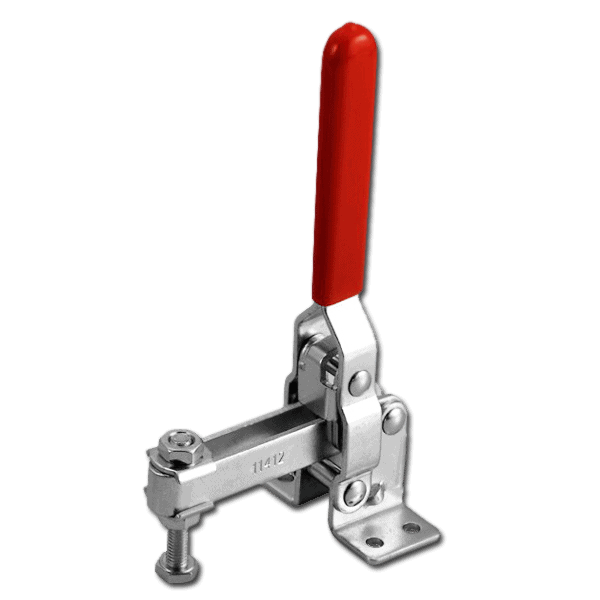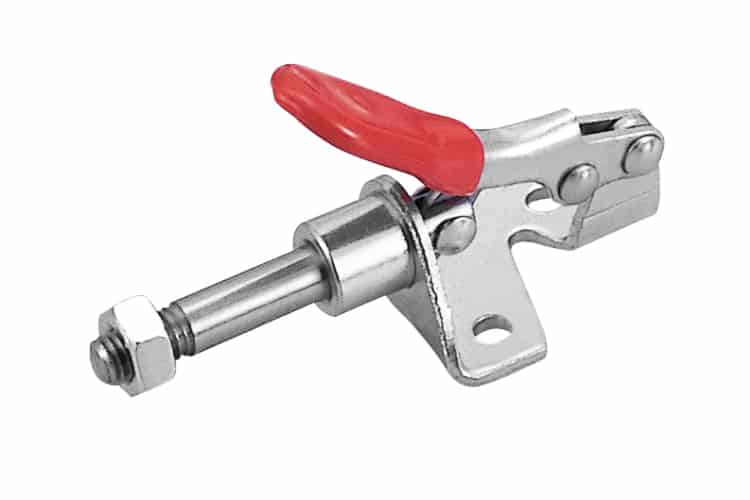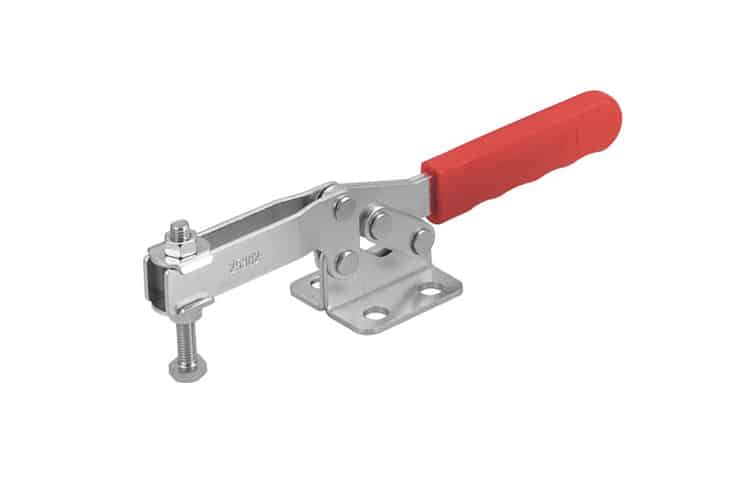Toggle clamps are widely used in the manufacturing industry, and they come in different types, including vertical and horizontal toggle clamps. These clamps are used to hold workpieces securely during various machining operations. In this essay, we will discuss the difference between a vertical and a horizontal toggle clamp.
What are Toggle Clamps?
Toggle clamps are mechanical tools that are designed to hold workpieces securely in place during various machining operations such as drilling, sawing, and milling. These clamps are typically made of steel or cast iron and have a lever that can be operated manually to secure the workpiece in place.
Toggle clamps come in different types, but the two most common types are vertical and horizontal toggle clamps. These clamps are designed to hold workpieces in different orientations, and they have unique features that make them suitable for different applications.

Horizontal Toggle Clamps
Horizontal toggle clamps, also known as push/pull toggle clamps, are designed to hold workpieces in a horizontal orientation. These clamps are typically used for applications where the workpiece needs to be held in place, and the machining operation is performed horizontally.
Features of Horizontal Toggle Clamps
Horizontal toggle clamps have several unique features that make them suitable for various applications. These features include:
Clamping Force: Horizontal toggle clamps are designed to provide a strong clamping force that can hold the workpiece securely in place. This force is provided by a mechanical lever that can be operated manually to clamp the workpiece.
Quick Release: Horizontal toggle clamps have a quick-release mechanism that allows the operator to release the workpiece quickly. This feature is essential in applications where the workpiece needs to be released quickly to avoid damage.
Adjustable Clamping Force: Horizontal toggle clamps have an adjustable clamping force that allows the operator to adjust the clamping force to suit the application. This feature is essential in applications where the workpiece needs to be held securely without being damaged.

Vertical Toggle Clamps
Vertical toggle clamps, also known as hold-down clamps, are designed to hold workpieces in a vertical orientation. These clamps are typically used for applications where the workpiece needs to be held in place, and the machining operation is performed vertically.
Features of Vertical Toggle Clamps
Vertical toggle clamps have several unique features that make them suitable for various applications. These features include:
Clamping Force: Vertical toggle clamps are designed to provide a strong clamping force that can hold the workpiece securely in place. This force is provided by a mechanical lever that can be operated manually to clamp the workpiece.
Quick Release: Vertical toggle clamps have a quick-release mechanism that allows the operator to release the workpiece quickly. This feature is essential in applications where the workpiece needs to be released quickly to avoid damage.
Adjustable Clamping Force: Vertical toggle clamps have an adjustable clamping force that allows the operator to adjust the clamping force to suit the application. This feature is essential in applications where the workpiece needs to be held securely without being damaged.

Difference Between Horizontal and Vertical Toggle Clamps
The main difference between horizontal and vertical toggle clamps is the orientation in which they hold the workpiece. Horizontal toggle clamps hold the workpiece in a horizontal orientation, while vertical toggle clamps hold the workpiece in a vertical orientation.
Applications
Horizontal toggle clamps are typically used for applications such as:
Woodworking: Horizontal toggle clamps are commonly used in woodworking applications where the workpiece needs to be held in place during various machining operations.
Metalworking: Horizontal toggle clamps are also used in metalworking applications where the workpiece needs to be held in place during various machining operations.
Welding: Horizontal toggle clamps are commonly used in welding applications where the workpiece needs to be held in place while it is being welded.
Vertical toggle clamps are typically used for applications such as:
Metalworking: Vertical toggle clamps are commonly used in metalworking applications where the workpiece needs to be held in place during various machining operations.
Welding: Vertical toggle clamps are also used in welding applications where the workpiece needs to be held in place while it is being welded.
Electronics: Vertical toggle clamps are used in electronics manufacturing applications where small components need to be held in place during assembly.
Choosing the Right Toggle Clamp for the Job
When selecting a toggle clamp, it is essential to consider the application and the orientation in which the workpiece will be held. Horizontal toggle clamps are ideal for applications where the workpiece needs to be held in a horizontal orientation, while vertical toggle clamps are ideal for applications where the workpiece needs to be held in a vertical orientation.
In addition to the orientation, other factors to consider when selecting a toggle clamp include the clamping force required, the size of the workpiece, and the type of material being machined.
Toggle clamps are essential tools in the manufacturing industry, and they come in different types to suit various applications. The two most common types of toggle clamps are horizontal and vertical toggle clamps. Horizontal toggle clamps hold the workpiece in a horizontal orientation, while vertical toggle clamps hold the workpiece in a vertical orientation. When selecting a toggle clamp, it is essential to consider the application and the orientation in which the workpiece will be held to ensure that the right clamp is selected for the job.
